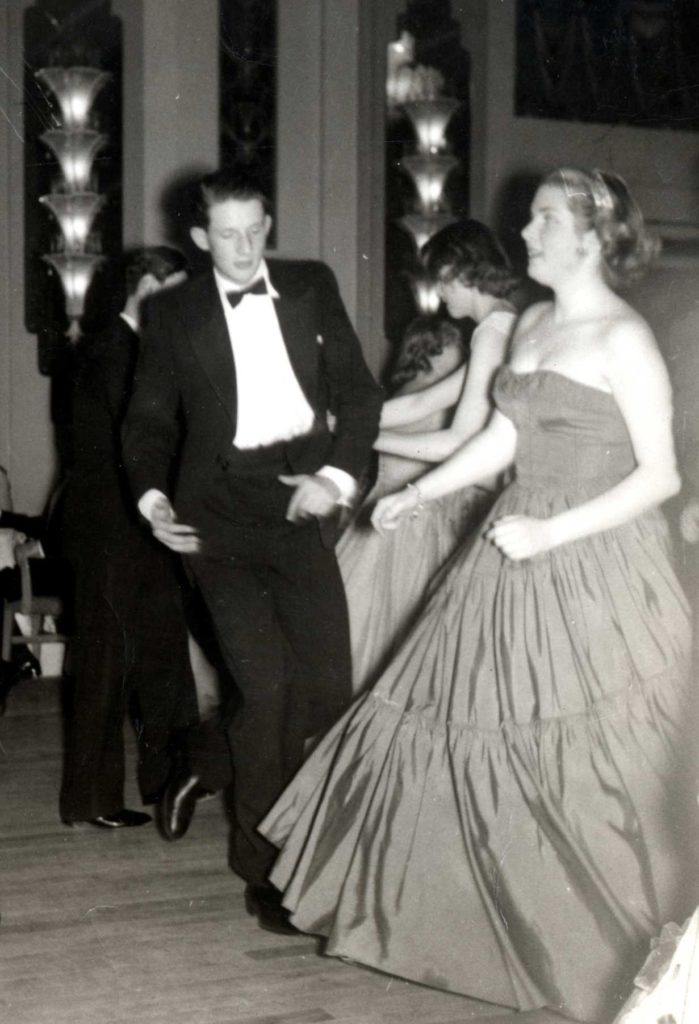Clubs and Social Events
Wellington in the 1950s offered a plethora of clubs and societies, providing a free-time interest for almost everyone.
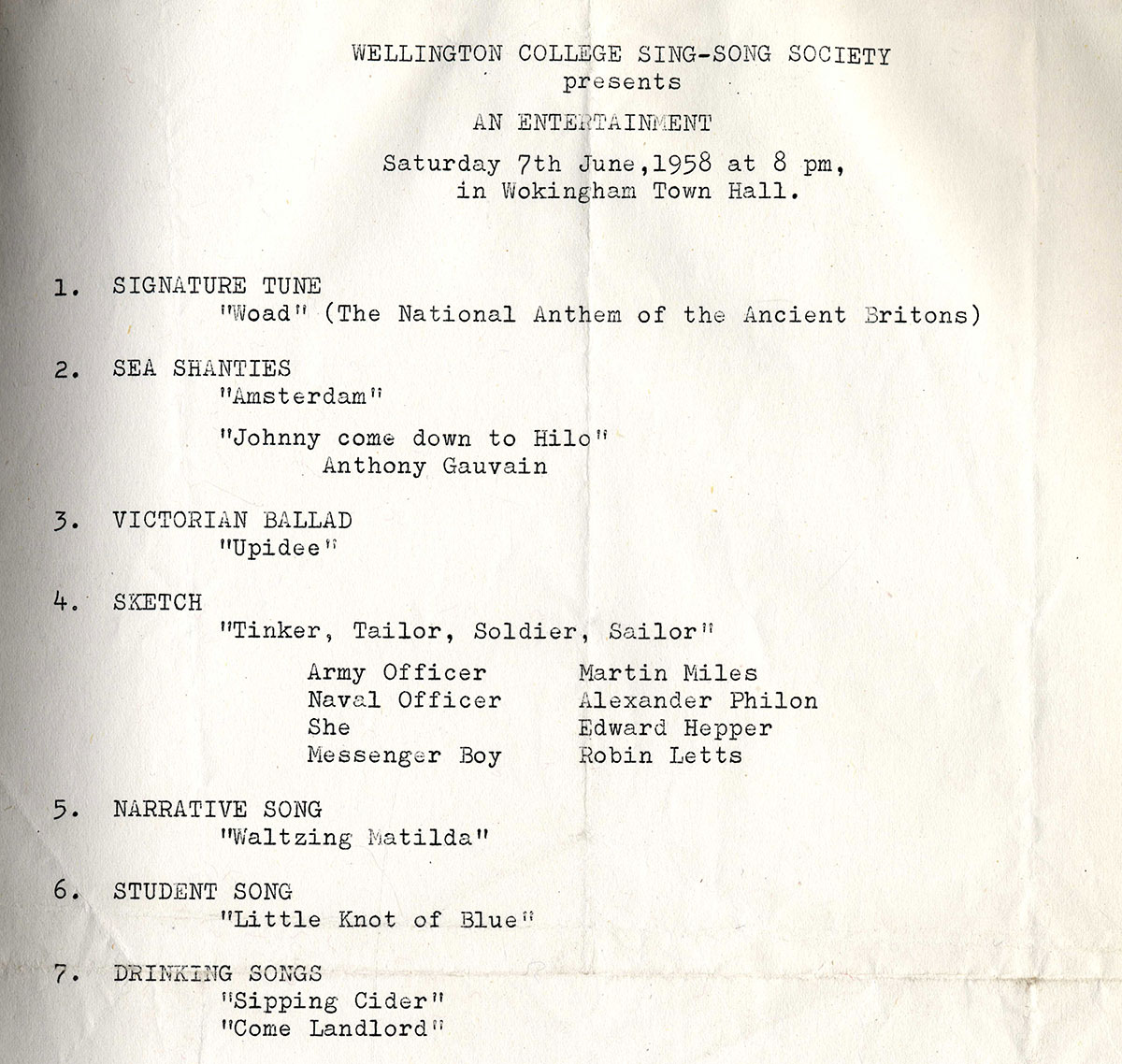
Peter Gardner (Hardinge 1946-51) enumerated some of the options on offer:
‘One thing that impressed me, even while at Wellington, was the number of extra-curricular activities and societies available, amounting to some forty in all. I was able to join:
- the Music Society; mostly devoted to the reading (once or twice a term?) of a paper by a member (boy or staff) on a musical subject of their choice;
- the Sing Song Society, a light-hearted group led by Bertie Kemp for singing non-classical songs and giving concerts to old people’s homes;
- the Film Society (Club?), for occasional viewing of less mainstream films from those shown to the whole College;
- the Bohemian Society, a select group of boys and staff devoted to meeting and listening to a talk by an important or renowned member of public life. One meeting that shines like a beacon in my mind was by Sir Basil Gould, the father of one of the staff, who talked about his expedition to, and experiences in, Tibet in 1936. This meeting left me with a life-long fascination for all things Tibetan.’
Several others also remembered the Bohemian Union:
‘I belonged to a society of would-be intellectuals called the Bohemian Union, where we dressed up in bow ties and listened to outside speakers.’ Sam Osmond (Hill 1946-51)
‘Mr Gould ran the Bohemian Union, which attempted to introduce a spirit of enquiry in its members several evenings a term. I joined, possibly the only pupil on the General Side.’ Nick Harding (Combermere 1951-1955)
‘I was in the Bohemian Union that thrived for a while, meeting on a weekend evening in Dick Gould’s home. He used to get interesting speakers for us, one of whom, a distinguished architect, assured us there would never be New York-style skyscrapers in London because the subsoil was not suitable. We used to go in odd-ball dress until it got out of hand. I remember being rather conservative in my own attire, then I pushed the boat out and looked and felt a complete ass as no-one else seemed to have done anything much.’ Douglas Miller (Benson 1951-56)
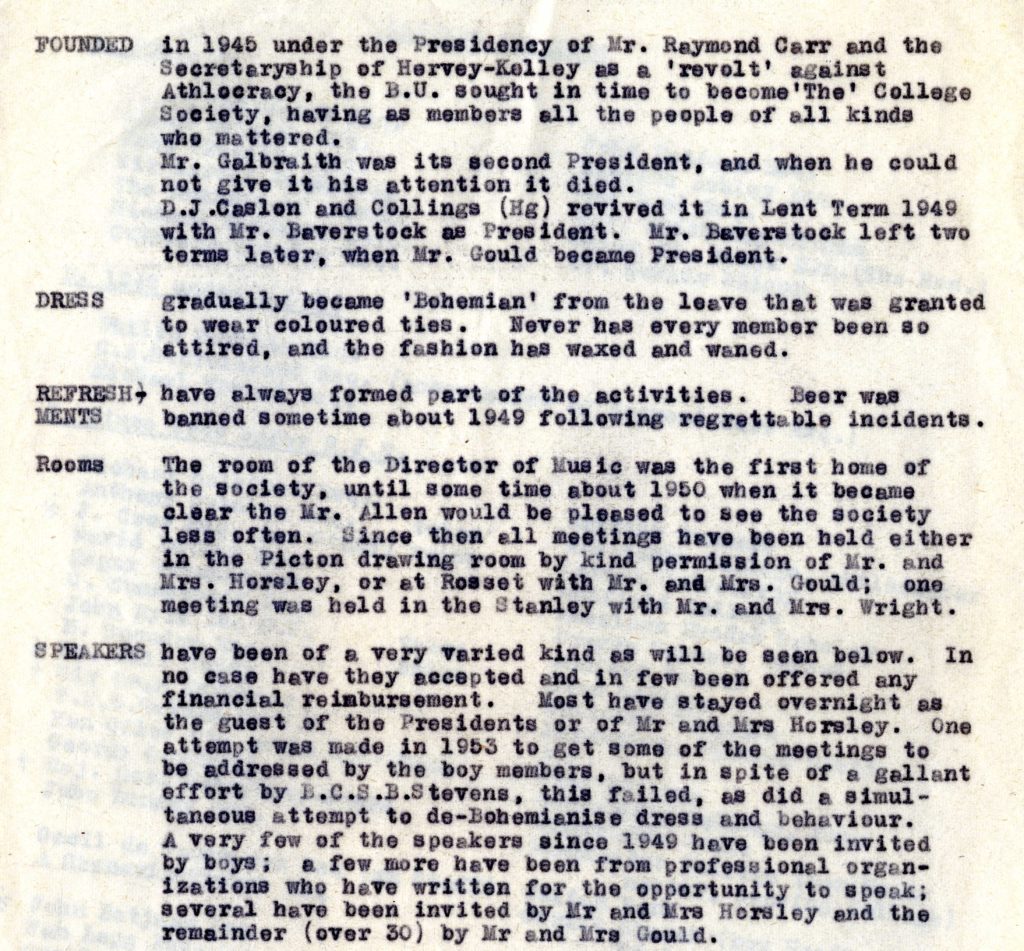
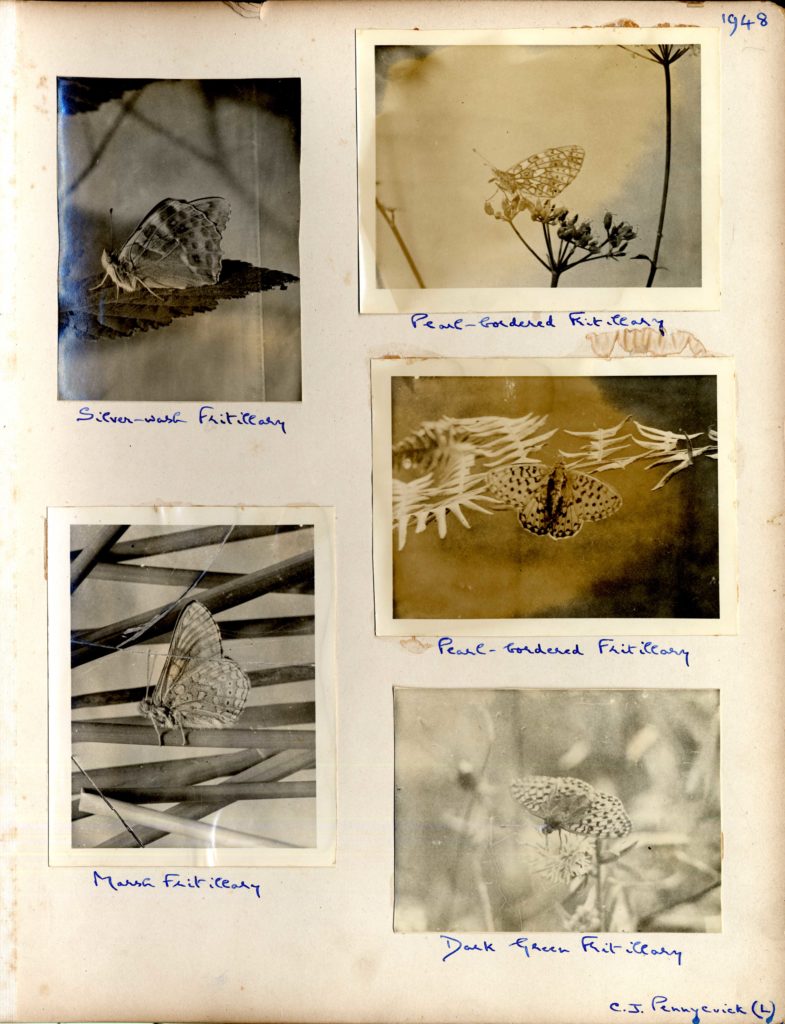
A very different, but equally popular club was the Natural History Society:
‘As my family was in Germany, I had plenty of spare time to myself at half term… At such time, I used to explore the six hundred acres of scrub and woodland available then. Most of this land stretched out from behind the lake opposite the driveway to Main Gate. In this area were scores of butterflies, dragonflies, birds, and even grass snakes, lizards, frogs, toads, and all sorts of insects. I loved the peace and quiet of this private paradise and, as a member of the Natural History Society, I was in Heaven.’ Anonymous
‘I was a keen country person, so joined the Natural History Society, as that allowed one to keep a bicycle at College. I went out looking at birds at some of the meres and lakes around (not College’s own lakes), where I spent many hours watching Canada geese and the resident swans, grebes, moorhens, and the occasional mallard.’ Anonymous
‘Periodic dawn climbs over the iron gates with Brian Hudson to find a variety of bird species on nearby heathland.’
Mark Yorke (Combermere 1950-55)
‘Natural History Society “A” members were allowed bicycles. To join, you only had to have an interest, and whilst that did not qualify for a bike, if you passed a test in your specific subject then you became an “A” member and could use your bike to carry out your study. My interest was entomology, specifically butterfly collecting, a common hobby in those days, and a healthy one, though the catching and pinning are now frowned upon. This interest gave me an excuse to use my bike most of the year, either looking for the eggs, then caterpillars, then chrysalids, and finally the butterflies. In today’s world, it is frightening to know that children as young as nine could legally have a “killing jar,” usually a jam jar containing about a 1-inch layer of cyanide under a thin covering of plaster-of-Paris. These jars would be produced by a chemist and only required written parental permission!’ Richard Craven (Hill 1950-54)
‘The Natural History Society was my main interest and I was its Secretary for some time. College’s grounds were full of interest and we cycled to neighbouring places, including Hawley Lake, to see some of the first Canada geese in England. We kept a pair of orphaned badger cubs in the old laundry one term. Eventually they escaped, which relieved us of the problem of their future. I kept the College hive of bees in the old Master’s Lodge Garden for two years and managed to make rather a good brew of mead, which we kept in old air-raid shelter until it exploded one holiday. Perhaps a good thing! I successfully took a swarm of bees which had settled in Front Quad just before Speech Day, much to the relief of all concerned.’ Norman Tyler (Hill 1947-52)
Roger Ryall (Picton 1951-56), however, remembered that the College bees became rather more unruly once Norman had left:
‘Wellington had its own beehives in the 1950s. They were situated behind the Science laboratories, under the distant care of the Biology master. They had been under the care of many generations of boys, most of whom knew nothing at all about beekeeping. The general policy was a friendly kick at the beehives to get things going, followed by as much smoke as you could generate out of the smoke machines. The result was hives of bees which had gone feral and were totally aggressive. These bees only knew one thing and that was how much they hated Wellingtonians. At the approach of gowned and gloved figures with netted hats, huge swarms would emerge, buzzing in the most intimidating manner. As one they would dive onto the approaching boys, stinging ferociously. The hatred was mutual and any boy who happened to have a knowledge of bees did not have a hope of calming them. Somehow, in spite of the protective clothing, they always got inside and you ended with multiple stings. In the daytime it was wise to keep at least thirty yards away from the beehives to avoid attack.”
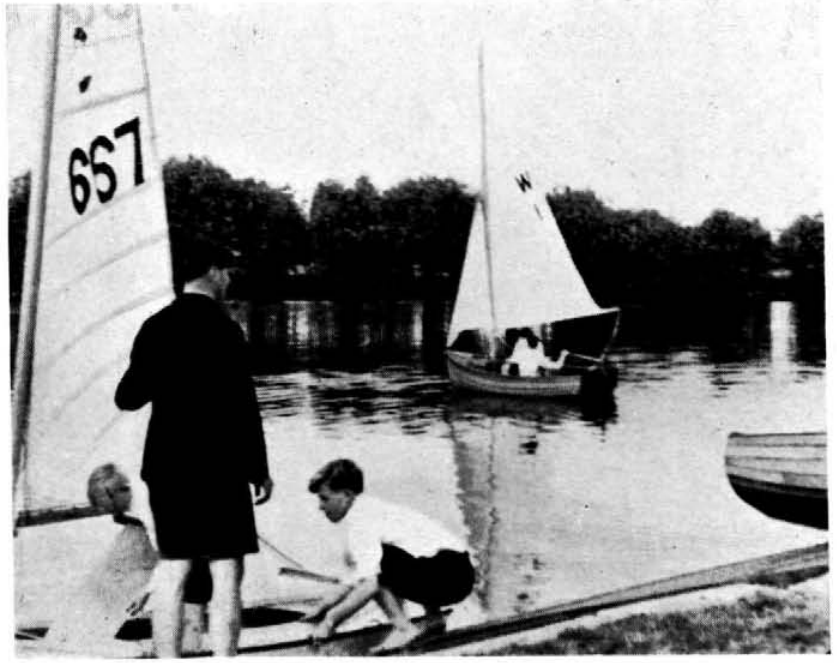
Another popular group also allowing one to have a bicycle was the Sailing Club:
‘I joined (the) Sailing Club Wellington had, connected to the Henley Sailing Club at Wargrave, and used to cycle there on Sundays. College owned some boats, including ones called Wellingtons, which were by far the slowest sailing boats on the Thames.’ Nick Harding (Combermere 1951-1955)
‘Being brought up in Norfolk, with a grandmother living in a cottage by the River Bure, I had been accustomed to sailing from an early stage. So, I joined the Sailing Club and at weekends would pedal all the way to the Thames for some sailing; latterly I kept my own Enterprise dinghy at the Club, towed there from Norfolk by my parents – but Thames sailing never compared with that on the Broads at home.’ Christopher Birt (Beresford 1955-60)
Several other societies also received mentions:
‘In my final year, I was asked by Douglas Young to inaugurate with another boy, John Previté, a College Debating Society, a stimulating feature which had been lacking since the War.’ Alan Munro (Talbot 1948-53)
‘I was a member of the Art Society, and every summer we were allowed up to London to view the Summer Exhibition at the Royal Academy.’ Nigel Hamley (Hill 1952-55)
‘I did join the Photographic Society and learnt to develop and print films.’ Graham Stephenson (Combermere 1953-57)
‘My Tutor, “Bertie” Kemp, ran the Film Society, membership of which was restricted to more senior boys, and used to select films by good directors. He would draw our attention to points of artistic and technical merit in what we watched.’
Christopher Stephenson (Hill 1949-54)
‘I was a member of the Philatelic Society, which met in Mr Leakey’s classroom.’ Anthony Collett (Combermere 1953-58)
‘I played a lot of chess with the Chess Club, playing regularly in Great Hall and matches in the Berkshire Schools Championships. One lasting memory was when I was about 16, playing third board against a supposedly “brilliant” 13-year-old Eton boy… I could not believe a move he made, and after a lot of thought I played… and he burst into tears, having made a serious mistake!’ Roger Pinhey (Hopetoun 1952-57)
Three respondents mentioned the Polyglots Society, ‘for visits to London to see Moliere or Schiller plays… under the guidance of Mr Storrar, we met to sing French and German folk songs.’ A few mentioned the Railway Club or simply watching trains from the bridge to Derby Field.
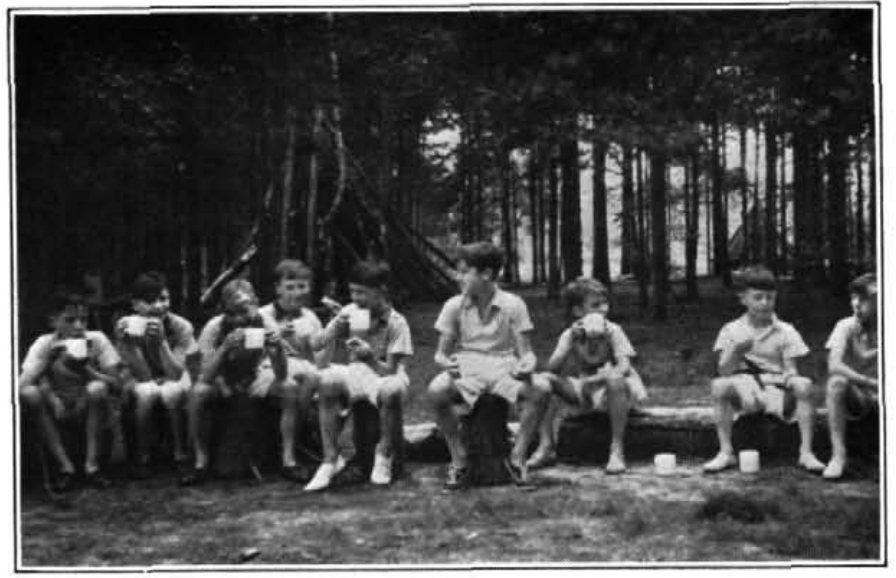
Several OWs became involved with College’s Mission Church and Club in Walworth, South London. This provided something very different from the prevailing Wellington culture:
‘I went up to the Walworth Clubs several times, and it was an eye-opener: playing games with rough cockney lads, but great fun after my sheltered upbringing! One memorable and sad impression was to see how one or two of my age group from snobbish “upper class” backgrounds were horrified (disgusted?) by the Walworth Clubs’ boys, and only went once.’ Roger Pinhey (Hopetoun 1952-57)
‘In my last year, I was the Prefect, whose duty was to maintain the link between Wellington and the Walworth Club. I organised what might be described as exchange visits with a busload to Wellingtonians going to spend time at the club and then hosting a visit by boys from the club to the school. I enjoyed the experience immensely, apart from the fact that I attempted to sleep under the stars when the Walworth boys were visiting and they slept in tents. Even though the visit was in the latter part of the Summer Term and the days were hot, the nights were surprisingly cold. I can only hope the experience broadened my appreciation of my fellow Britons and that it added to other earlier lessons of the importance of being part of a larger community.’ Richard Merritt (Picton 1954-59)
Perhaps the most popular societies were those which, occasionally, provided access to members of the opposite sex.
One such society was the Scottish Reel Club, for which the Beresford boys perhaps sowed the seed:
‘Some in my dormitory realised that female partners were not necessary for Scottish country dancing and decided to do something about it. So, they started doing reels and things in the dormitory corridor. Within weeks we were all caught up in a craze for anything that remotely looked like Scottish dancing. We would get together for reels during every spare moment we had: but mainly at the weekends. Our “Jimmy Shand and his Band” records really got a workout for the next month or two. However, eventually we had to stop because the impact of eight or sixteen energetic, heffalump-like, testosterone-driven dancers cracked the ceiling beneath the floor on which we danced.’
Chris Heath (Beresford 1948-53)
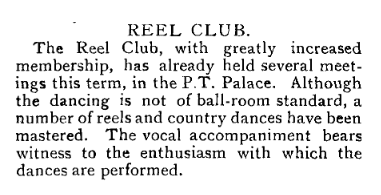
Once the club was formed, however, it attracted a few women:
‘The other place we used to meet women and the odd girl was the Reel Club, where the young ushers’ wives gave us female company. I was a keen reeler. My crush on Julia House sadly came to an end because an old friend of mine knew much more about girls than me and took Julia off me.’ Bertram Rope (Picton 1949-54)
‘I was a member of the Scottish Reels Dancing Club, run in the Old Gym by Mrs Gould. This club taught me the reels – another lifetime interest, especially as being a Bruce I have, since adulthood, been wearing the kilt in the family tartan for all such gatherings. An added attraction was that several housemasters had attractive young Scandinavian girls as au pairs to help look after their children. Arnold Potter had one such, and she and I had some most enjoyable walks together back to the Benson in the dark!’ Anthony Bruce (Benson 1951-56)
‘And then there was the Scottish Reel Club, which I suppose indirectly had the greatest influence on my life of anything at Wellington. In the 1950s it had become fashionable to have young girls from various European countries as au pairs. Some of the married “ushers” who had children had such girls to help their wives and learn English, and the girls, mainly Danes, made a welcome addition to the meetings of the Reel Club, infinitely preferable to the alternative, whereby one boy would wrap a scarf around his waist and be the female partner. Dick Gould, my Undertutor, and his wife Erica, had Kirsten, judged to be the most attractive au pair of a very strong field. I had little to commend me to any girl but somehow, I managed to remain in contact with Kirsten and, three years after leaving Wellington, we married.’ Neil Munro (Talbot 1952-56)
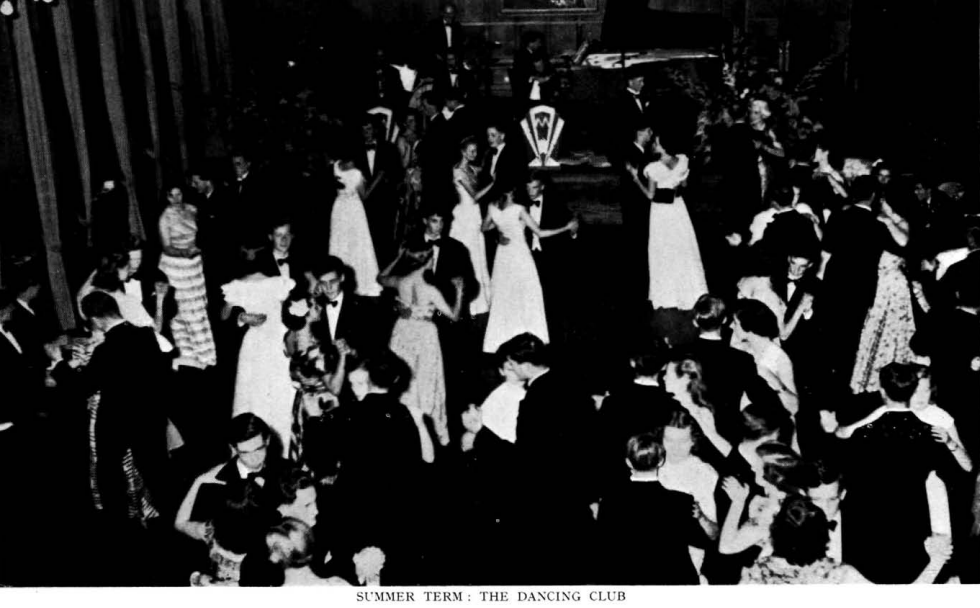
Those not attracted to Scottish reels could learn ballroom dancing:
‘I became Secretary of the Dance Society in which we were taught to waltz, quickstep, foxtrot and so on, but, of greater significance, the role gave me responsibility for the biannual school dance where daring Wellingtonians invited “girlfriends” or took pot luck with delegations of girls from Luckley Girls’ School and – much to be preferred – Elmhirst Ballet School. Here I earned considerable kudos in my last term for my success in persuading my partner, the Master’s daughter no less, to persuade her father to allow us to dim the lights for the last waltz.’ Christopher Capron (Benson 1949-54)
This annual or biannual dance was mentioned by several Wellingtonians of the 40s and earlier 1950s – after that, it was perhaps discontinued, but by some it will never be forgotten:
‘Not modern-type raving, but sedate waltzes, quicksteps, and such. As well as the usual staff wives, we were actually allowed to dance with real girls of our own age. The girls came from a school in Wokingham – Luckley Ladies’ College, or some similar name. Anyway, they were good sports and coped with our frequently treading on their feet remarkably well. But any lasting liaison was prevented by the dance taking place from 6.30pm to 8.30pm when the girls were promptly driven away!’ Christopher Beeton (Talbot 1943-47)
‘(With) there being no girls at Wellington, some luckless girls were always bussed in from nearby schools to be dance partners. Chaperoning these dances must have been a nightmare because, at that stage, the older boys were thinking about girls for the first time: particularly the senior boys, such as the Prefects who, as was the usual practice, would have been put in charge of organising the event. So, the teachers would have had to monitor the dance as close as that of a guard at Colditz. For safety’s sake, they probably made sure that fun was at a minimum and nothing got out of hand. However, some boys did have some fun: mostly necking but also some smoking.
While a few brought their current girlfriends, most (of) us were paired off with an import. It immediately became clear how ill-prepared we boys were with young women. The group I was with spent the entire evening sitting around one of a number of tables scattered around the hall. Conversation was stilted to say the least. The silence was eventually broken when one boy asked his partner which end of the bath she sat? Of course, my attempt at having a grown-up conversation was no better. Another boy, when ironing the trousers of his evening dress, inadvertently ironed his trouser creases at ninety degrees to normal. His trouser legs looked like long boxes, rather than part of a posh dinner suit. I doubt many of the boys knew how to dance properly, but I would bet that most of the girls were comparatively accomplished. Attending a dance at Wellington must have been a nightmare for the girls and, if nothing else, they may have decided never to get married: at least not to anybody from Wellington.’ Chris Heath (Beresford 1948-53)
